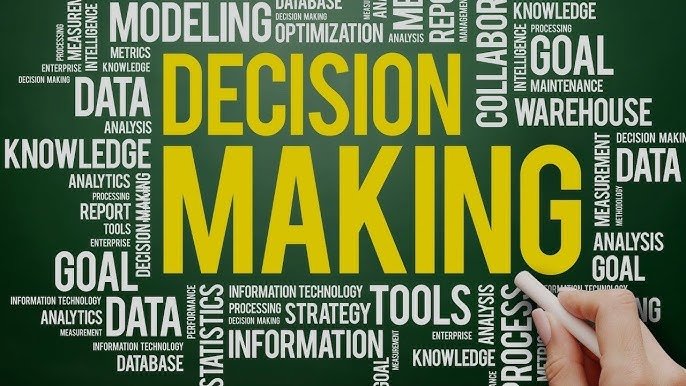
Decision making is an intrinsic aspect of the human experience, permeating every facet of our lives, from mundane daily choices to significant life-altering decisions. The psychology behind everyday decision making is an intricate field of study, drawing from cognitive psychology, behavioral economics, and social psychology, among other disciplines. Understanding the mechanisms at play can enhance our awareness of how we make choices, what influences those choices, and how we can become more effective decision-makers.
I. The Nature of Decision Making
At its core, decision making is the process of selecting a course of action from among multiple alternatives. This process involves several cognitive mechanisms, including evaluation, prediction, and judgment. In any given situation, individuals must weigh the potential outcomes, prioritize their values, and consider external influences before arriving at a decision.
A. Types of Decisions
Decision making can be classified into two broad categories: routine and complex decisions. Routine decisions, often referred to as habit-based choices, require little cognitive effort. Examples include selecting what to wear each day or choosing between two brands of toothpaste. These decisions are characterized by their repetitive nature and are frequently made based on past experiences or established preferences.
In contrast, complex decisions entail a more substantial cognitive investment. These often involve multiple variables, uncertain outcomes, and significant consequences. Instances of complex decision making can be found in choices regarding career paths, purchasing a home, or determining long-term financial investments. The complexity of these decisions often triggers a meticulous process of information gathering, analysis, and reflection.
II. Cognitive Biases in Decision Making
Numerous cognitive biases influence how individuals make decisions, often leading to irrational outcomes. These biases stem from the brain’s attempts to simplify information processing, which can compromise the quality of decision making.
A. Confirmation Bias

One of the most prevalent biases is confirmation bias, which refers to the tendency to seek, interpret, and remember information in a way that confirms one’s preconceptions. In the context of decision making, this bias can lead individuals to disregard contrary evidence or alternative viewpoints, thereby stifling critical analysis and perpetuating flawed conclusions. For instance, a consumer might ignore negative reviews of a product because they already favor the brand, potentially leading to dissatisfaction with their purchase.
B. Anchoring Effect

Another significant cognitive bias is the anchoring effect. This phenomenon occurs when individuals rely heavily on the first piece of information encountered when making decisions. For example, in a negotiation setting, the initial offer may serve as an anchor, influencing the direction of subsequent discussions and altering perceptions of value. Anchoring can distort judgment and lead to suboptimal decision-making outcomes.
C. Loss Aversion

Loss aversion, a concept rooted in behavioral economics, suggests that individuals are more sensitive to losses than gains of an equivalent amount. This psychological phenomenon leads to risk-averse behavior, whereby people might forego beneficial opportunities simply to avoid potential loss. For entrepreneurs and investors, this bias can hinder innovative thinking and open-mindedness regarding risks associated with new ventures.
III. Emotional Influences on Decision Making
Emotions play a crucial role in shaping the decision-making process, often acting as a double-edged sword. While they can provide valuable insights and prompt quick judgments in high-stakes situations, emotions can equally cloud rational judgment and provoke impulsive decisions.
A. Affective Forecasting

Affective forecasting refers to an individual’s ability to predict their future emotional states in response to various outcomes. Research has shown that people often overestimate the intensity and duration of their emotional reactions—a phenomenon known as the impact bias. For example, individuals may believe that achieving a particular career milestone will bring them lasting happiness. Yet, this expectation may not align with their actual emotional experience, leading to disappointment and disillusionment.
B. The Role of Stress

Stress is another emotional state that can significantly impair decision making. Under duress, individuals are more likely to resort to heuristic decision-making strategies, favoring quick, simplified judgments over methodical evaluations. This inclination may result in choices that are not in their best interests, highlighting the importance of managing emotional states to enhance decision-making quality.
IV. Social Influences and Group Dynamics

The social context in which decisions are made can profoundly influence individual choices. Group dynamics, peer pressure, and social norms interplay to shape how decisions are approached and executed.
A. The Bandwagon Effect

One relevant concept is the bandwagon effect, which reflects the tendency of individuals to adopt certain behaviors or beliefs because others are doing so. This effect can be particularly potent in consumer behavior, where individuals may be drawn to popular products or trends regardless of their own preferences. This social pressure can lead to decisions that do not align with personal values or needs.
B. Groupthink

Groupthink is another critical phenomenon observed in group decision-making contexts. When a cohesive group prioritizes consensus over critical reasoning, the quality of decision making often suffers. Dissenting opinions may be suppressed, and innovative ideas can be overlooked, resulting in poor outcomes. Leaders must remain vigilant in fostering an environment that encourages diverse perspectives and constructive debate.
V. Strategies for Improved Decision Making
In light of the numerous psychological factors that influence decision making, individuals and organizations can adopt various strategies to enhance their decision-making processes.
A. Embrace Reflection

Taking time to reflect on past decisions can provide invaluable insights into one’s decision-making style and preferences. By identifying patterns in previous choices and outcomes, individuals can develop a clearer understanding of their cognitive and emotional biases, thereby reducing the likelihood of repeating mistakes.
B. Utilize Decision-Making Frameworks

Employing structured decision-making frameworks can assist individuals in systematically evaluating options and outcomes. Techniques such as cost-benefit analysis, decision trees, and multi-criteria decision analysis can facilitate a more objective assessment of alternatives, promoting better-informed choices.
C. Foster Open Dialogue
In group decision-making contexts, cultivating open dialogue is essential. Encouraging diverse viewpoints and creating a psychologically safe environment in which individuals feel comfortable expressing dissent can lead to more comprehensive and well-rounded decisions.
Conclusion
The psychology of everyday decision making is a multifaceted field that intertwines cognitive, emotional, and social factors. By understanding the dynamics of biases, emotional influences, and social contexts, individuals can cultivate a more profound awareness of how they make choices. Armed with this knowledge, they can develop strategies to improve decision-making quality and enhance their overall satisfaction with the outcomes. As decision making remains an omnipresent element of human existence, fostering effective decision-making practices is not only beneficial but essential for leading a fulfilled and purposeful life.







Leave a Reply